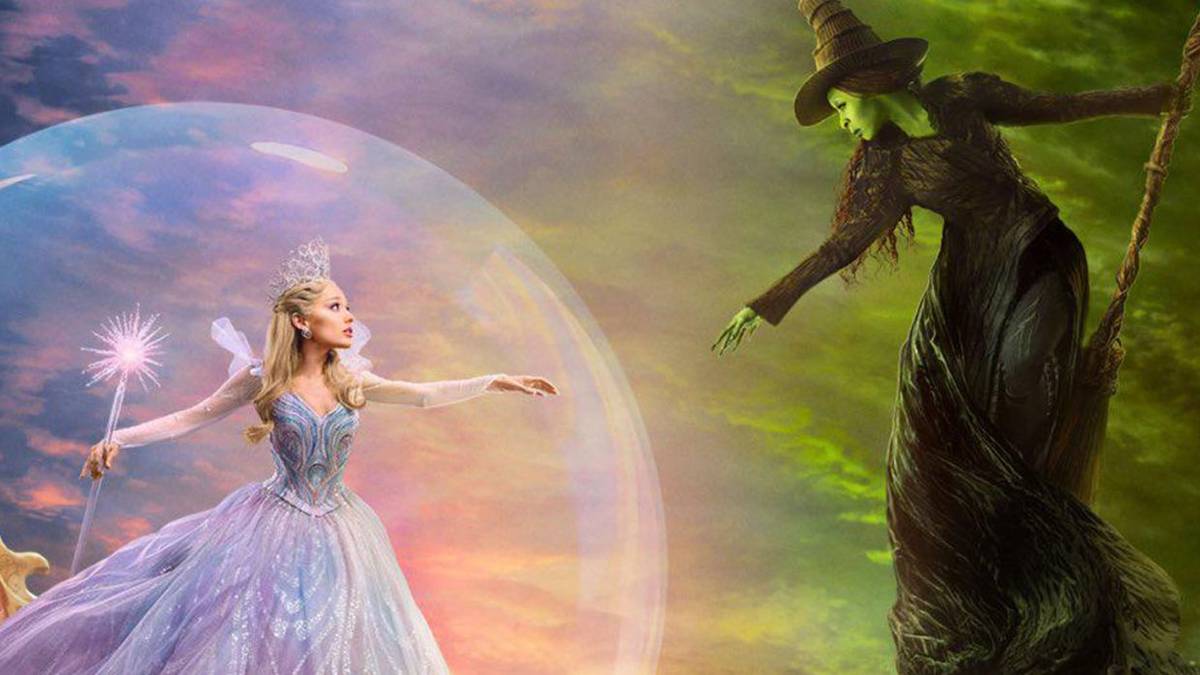Wicked: For Good Mania! Film Dominates Award Nominations and Reveals Behind-the-Scenes Magic

A major exhibition titled “Crafting Character: The Costumes of Paul Tazewell” is set to premiere at Chicago’s Griffin Museum of Science and Industry on January 19, 2026. This will be the first exhibition dedicated to the extensive work of Paul Tazewell, a celebrated costume designer whose creations have graced numerous stage and screen productions. Tazewell expressed his profound honor and excitement, emphasizing the privilege of sharing his work in an engaging and immersive way, inviting audiences to experience the creative process firsthand.
Housed in the museum’s immersive Griffin Studio, the exhibition promises a multimedia journey guided by Tazewell’s own words and vision. It combines displays of iconic costumes with personal narration, behind-the-scenes videos, photos, and sketches, offering an intimate look at how imagination transforms into reality. Highlights include costumes from the musical Wicked, such as Glinda’s pink bubble dress and Elphaba’s Emerald City gown, as well as Janelle Monáe’s MET Gala ensembles. Also featured are Ariana DeBose’s memorable yellow dress from Steven Spielberg’s West Side Story and Tazewell’s Tony Award-winning designs from the original Broadway production of Hamilton, including the Schuyler sisters’ winter ball gowns, Hamilton, Jefferson, and Burr’s suits, and King George’s outfit.
Dr. Chevy Humphrey, CEO and President of Griffin MSI, emphasized the museum’s belief that “if you can see it, you can be it,” positioning Tazewell as a prime example of this philosophy. She highlighted how Tazewell’s story and creative process, from concept to completion, are intended to inspire the next generation of innovators and creators. Over a three-decade career spanning theater, film, and television, Tazewell has earned numerous accolades, including being the first Black man to win the Academy Award for Best Costume Design for Wicked. His other honors include Tony Awards for Death Becomes Her and Hamilton on Broadway, and an Emmy for The Wiz! Live. His latest work will be showcased in the upcoming film Wicked: For Good, set for release on November 21, 2025.
Director Jon M. Chu envisions Wicked: For Good as part of a “one giant arc” with its predecessor, delving deeper into the complex relationship and consequential choices of Elphaba (Cynthia Erivo) and Glinda (Ariana Grande). Production designer Nathan Crowley expanded the world of Wicked for this film, conceptualizing Elphaba’s forest hiding place as she embraces her destiny as the “Wicked Witch of the West.” Crowley’s design included dynamic, circular, rotating trees and a central “mother tree” where Elphaba creates a nest—a concept developed organically to enhance the narrative beyond the script.
The elaborate forest set took six weeks to assemble. Crowley’s team, working with the greens department, used locally sourced wood to craft the nest, resulting in a sculptural piece he described as “totally an art installation.” Lighting was meticulously considered, with the mold-making department creating transparent silicone leaf molds with hand-painted veins, allowing cinematographer Alice Brooks to achieve precise lighting effects on the nest’s roof. Even the bed within the nest was crafted from woven branches to maintain the organic aesthetic.
Wicked: For Good has already received significant recognition, leading the Hollywood Music in Media Awards with six nominations, including a score nomination for John Powell. Songs from the film, such as “No Place Like Home” performed by Cynthia Erivo and “The Girl in the Bubble” performed by Ariana Grande, both written by Stephen Schwartz, are also nominated. These accolades underscore the film’s anticipated impact on the musical cinematic landscape.
Chu explained that the film explores themes of friendship and consequence, testing Elphaba and Glinda as they navigate new identities and the far-reaching effects of their choices. He emphasized that the story is fundamentally about friendship, a theme deeply personal to him and his collaborators.
Chu, Brooks, and editor Myron Kerstein were recently honored with the Creative Collaborators Award, recognizing their long-standing partnership. Their journey began at USC, where Chu and Brooks, both passionate about musicals during a time when the genre was considered “dead” in Hollywood, forged a deep creative bond. Brooks recalled a treasured music box gifted by Chu at the end of their first collaboration, playing “When You Wish Upon a Star,” symbolizing their shared dream. In return, Brooks gifted Chu a music box engraved with “unlimited” on the first day of shooting Wicked. Chu described their collaboration as the “Michelangelo Effect,” where each inspires the other to reach their full potential, emphasizing the trust and mutual expectation underlying their work.
Kerstein, who has worked with Chu since Crazy Rich Asians, recounted the emotional process of editing Elphaba’s “No Good Deed” sequence. Chu praised Kerstein’s empathic approach, noting that while action-focused versions existed, Kerstein’s attention to subtle details allowed the emotional core of the number to resonate profoundly. This long-standing trust allows the collaborators to be rigorously critical yet supportive, navigating creative challenges together to achieve their artistic vision.
You may also like...
AFCON 2025 Countdown: Tanzania Coach Battles Cold Fears Ahead of Super Eagles Clash
)
Nigeria kicks off their AFCON Group C campaign against Tanzania in Fes, with the Super Eagles aiming for a strong start ...
Rogers' Double Secures Aston Villa Win Over Man United; Fernandes Injured
)
Aston Villa secured their tenth consecutive win, defeating Manchester United 2-1 at Villa Park thanks to a brace from Mo...
Blockbuster Reign: ‘Avatar: Fire and Ash’ Explodes With $88 Million Opening Weekend
James Cameron's "Avatar: Fire and Ash" opened to $88 million domestically and $345 million globally, a decent but lower ...
Disney Mourns Loss: Architect Behind Global Expansion, Diego Lerner, Dies at 71

Diego Lerner, a foundational leader in The Walt Disney Company's Latin American and European expansion, has died at 71. ...
Cher Delivers Iconic Holiday Cheer on SNL with Festive Song Medley

Pop icon Cher made a triumphant return to Saturday Night Live after 38 years on December 20, 2025, performing tracks fro...
Hennessy Artistry Ignites Nation with Sound & Culture Extravaganza!

Hennessy Artistry's 2025 'The Reboot' campaign successfully delivered a multi-city journey across Nigeria, fusing music,...
West Africa's BRVM Celebrates 29 Years of Anchoring Regional Capital Markets

The Regional Stock Exchange (BRVM) celebrated its 29th anniversary, highlighting its crucial role in regional financing ...
Liberian President Boakai Claims Ignorance on Controversial 'Presidential Villa' Launch

Liberian President Joseph Boakai has made a striking admission, revealing a major, highly secured construction project i...




